The cost of technology continues to decrease in many facets of our lives. Do you remember the high cost of desktop computers first widely available for home use? How about the first cell phones? In both cases, you can currently buy the cheapest version of either technology and, not only will it cost a fraction of the early versions, the performance and features will be significantly better.
The cost of communication has also dropped significantly. There are now a variety of channels beyond printed communication. Web, phone and email-based communications offer inexpensive ways for payers and providers to conduct outreach. And many of their members and patients actually prefer these forms of communication. But the reality is printed communications are here to stay, due to the relentless march of innovation in printing technology and dramatic reductions in the cost of ownership.
This post’s purpose is to highlight the incredible communication expense that funded the development of these powerful digital printing technologies and provide a comparison of the original costs compared to today’s pricing.
Digital launch
We need to step back to the launch of the first production digital printers to appreciate how expensive it was to print and communicate with patients and members. In one of my earliest Flashback Friday posts, I wrote about line printers that were connected to mainframe computers and used to print transactional communications. These communications were primarily bills and other applications which utilized a high degree of variable data stored on mainframe computers. Companies printed communications on line printers with a high usage of expensive, pre-printed color forms.
In 1977 Xerox launched the 9700, a revolutionary digital production printer with breakthrough capabilities: 300×300 dpi print resolution, 120 impressions per minute, and printer-based application programming. More importantly, these devices also used electronic forms, eliminating the need to purchase preprinted forms necessary for line printers. Many companies justified the expense of a 9700 solely on the savings generated by no longer needing preprinted forms.
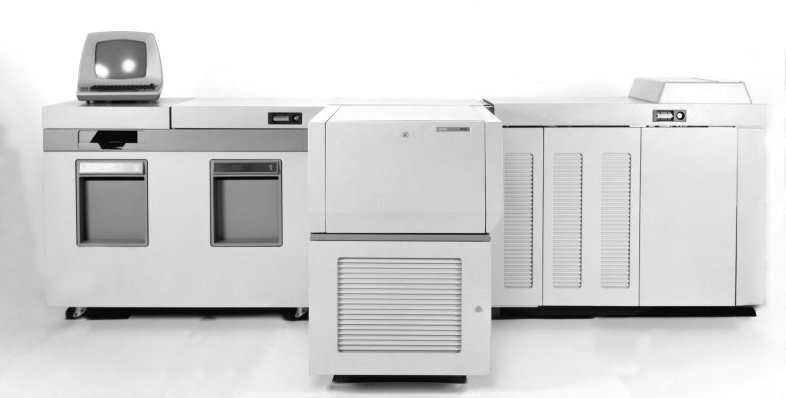
Hold on to your hats – because here’s where it gets interesting. In 1977 the base purchase price of the 9700 was roughly $450,000. The equivalent of $1,900,000 dollars today! And the cost didn’t end with the technology. The client had to pay for monthly service on the device as well as a per impression click charge of over one cent per impression. One cent per impression doesn’t seem like much now but that’s the equivalent of almost four cents per impression today. All for black and white printing at a modest resolution.
This highlights how much companies were spending on preprinted forms for their line printers. They could justify an investment of $1,900,000 in today’s dollars in large part due to the elimination of preprinted forms. The 9700 not only blew up the line printer market, but also dramatically impacted the preprinted forms market that supplied the fanfold forms used with line printers.
Print on Demand and Color printing arrive
The 9700 was used for transactional print but, around 1990, Xerox launched the DocuTech 135 which offered a better alternative to offset printers on short run lengths. The focus was promotional print without a lot of variable data and clients who didn’t want to print many copies of jobs. They wanted to print them as they needed them. The original DocuTech cost more than $300,000 in 1990. The equivalent of over $600,000 today! At 600×600 dpi, the print resolution was four times better than the 9700. The DocuTech also offered valuable capabilities in pre-press and finishing. But we’re still talking about a black and white printer with zero color printing capability.
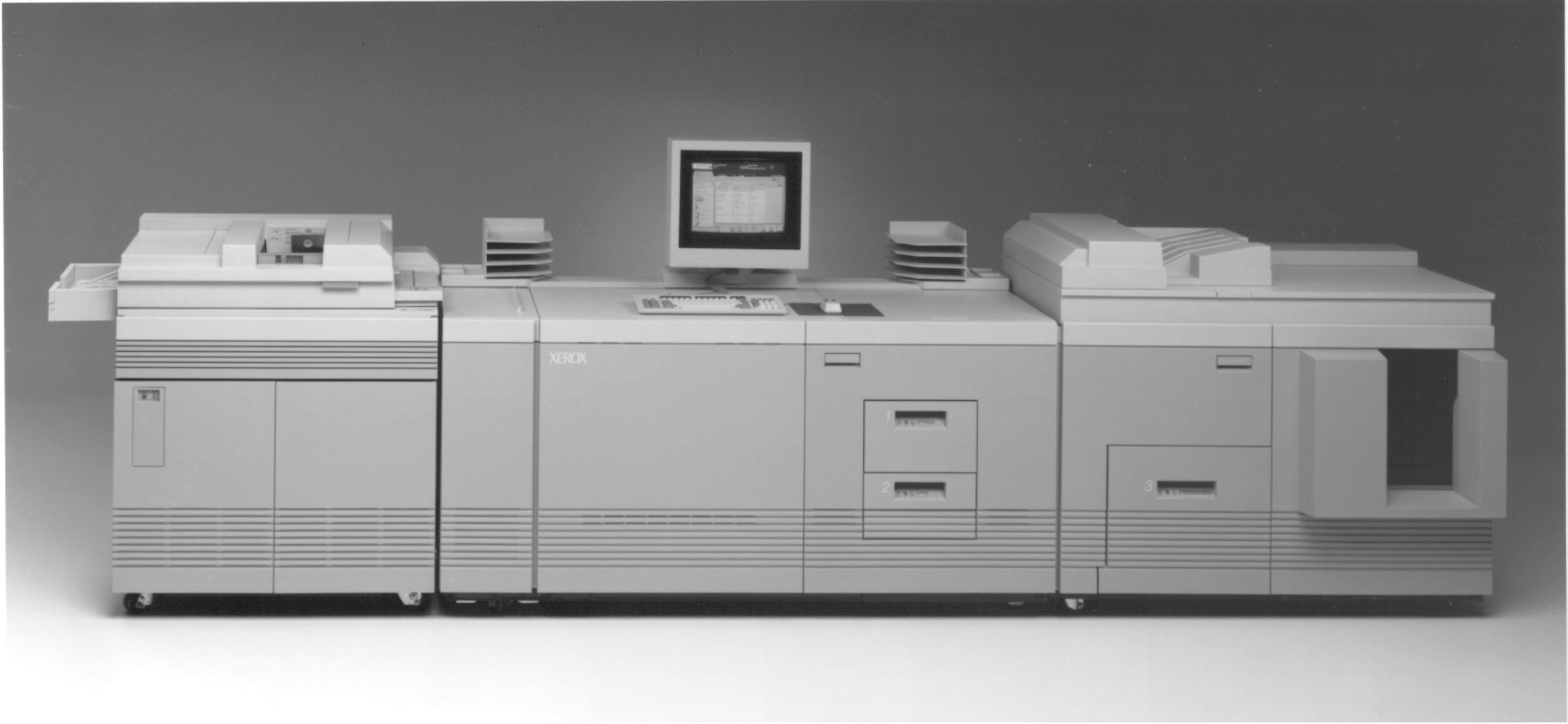
Around 2000, Canon and Xerox both launched the first full color, cut sheet production digital printers. The Xerox 2060 offered 600×600 dpi at 60 impressions per minute. It also offered a base purchase price in excess of $200,000! The equivalent of over $320,000 today! Even more, the service plans were punishing. How does a click rate of $0.16 per impression grab you? Clients regularly paid printers $1.00 or more per impression to get color printing on demand. The quality did not match offset printing, but it was “good enough” for a short run.
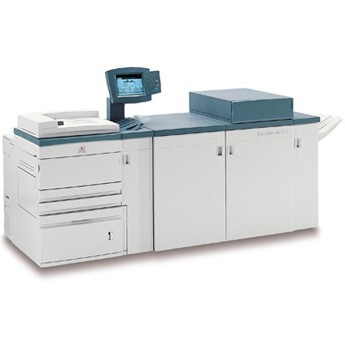
DocuColor 2060
What do we have now?
The relentless march of innovation has completely transformed production level printers. Today you can easily print both transactional and promotional applications on the same printer, because the digital front ends can accept a wide variety of file formats.
Even more, the print quality, paper stock capability, and finishing options have transformed this space. How does 2400×2400 dpi for full color printing sound? That’s 64 times better print resolution than the original 9700! How about special colors and an incredible array of paper sizes and weights to increase image and communication options? All are available now.
Lastly, the cost has dropped dramatically. Full color printing is now the standard. For the same $450,000 today that clients paid for the original 9700, you can purchase an HP Indigo 7900 Press with a print speed over 200 8 ½” x 11” full color images per minute with 2400×2400 dpi quality. That $450,000 today is the same as spending $99,000 in 1977. All the technological developments for less than a quarter the cost of the original 9700.
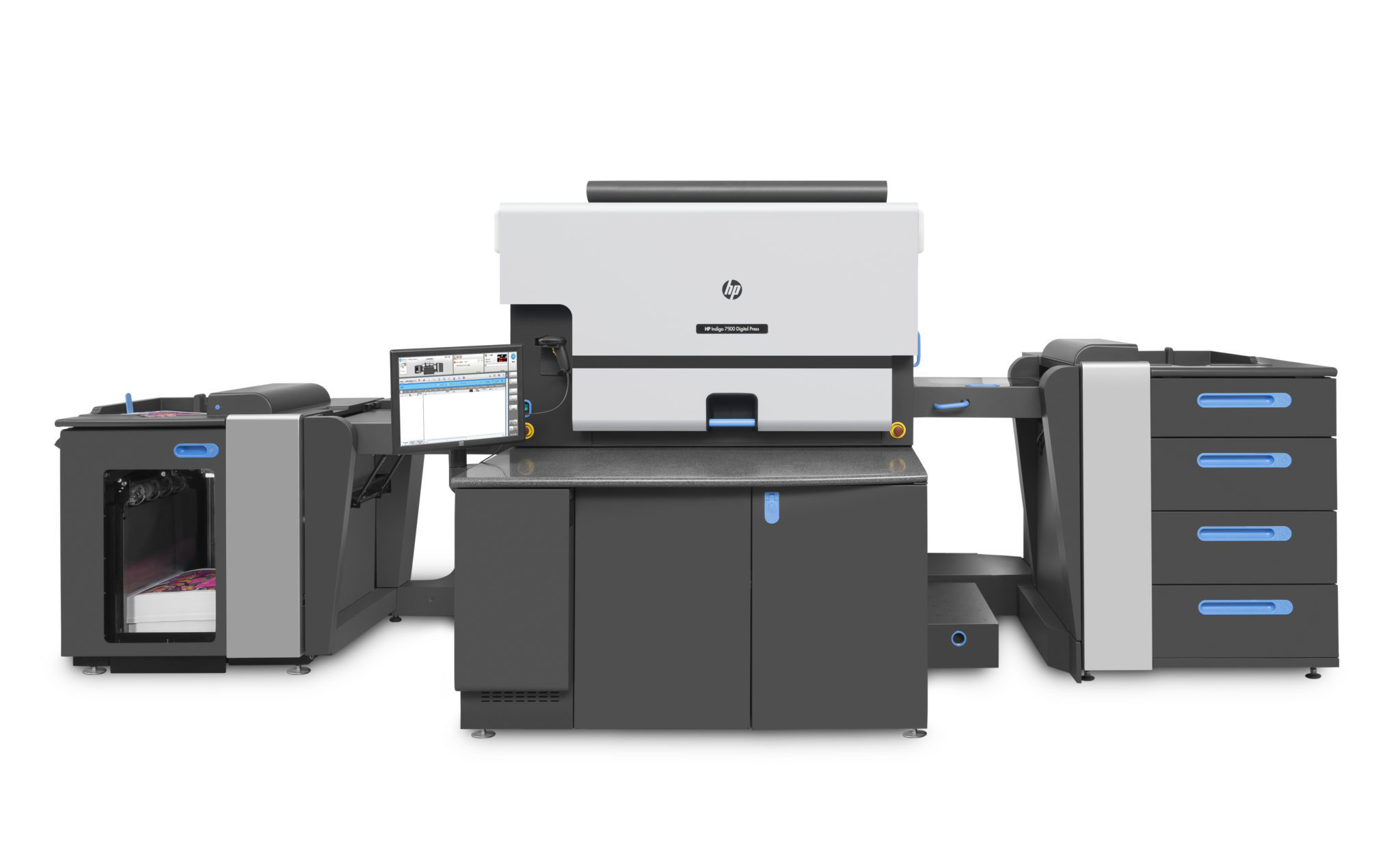
Remember the $0.01 click rate on the 9700 for black and white printing (the equivalent of $0.04 today)? The Indigo currently offers a click rate of $0.02 in FULL COLOR for each 8 ½” x 11” page. That’s less than half a cent in 1977 dollars for full color printing! Less than half the price per black and white click of the original 9700.
Print is here to stay
All these technological advances and cost reductions in printing have been supported by composition tools that easily take advantage of client data. Printers can personalize individual communications in ways unheard of 20 years ago. As a result, response rates and usage for printed promotional communications have gone from an industry standard of one to two percent to routinely over ten percent. There is no reason why this won’t continue to improve as data analytics provide more accurate insight into individual purchasing habits.
The power and success of these tools in the consumer market has been enabled by the massive amounts of data gathered on individual purchases, habits and preferences. Imagine how we might improve chronic illness treatment by combining these communication technologies with a truly comprehensive longitudinal patient record with both clinical and non-clinical information. Until we overcome the fragmented nature of patient information, we won’t be able to find out.
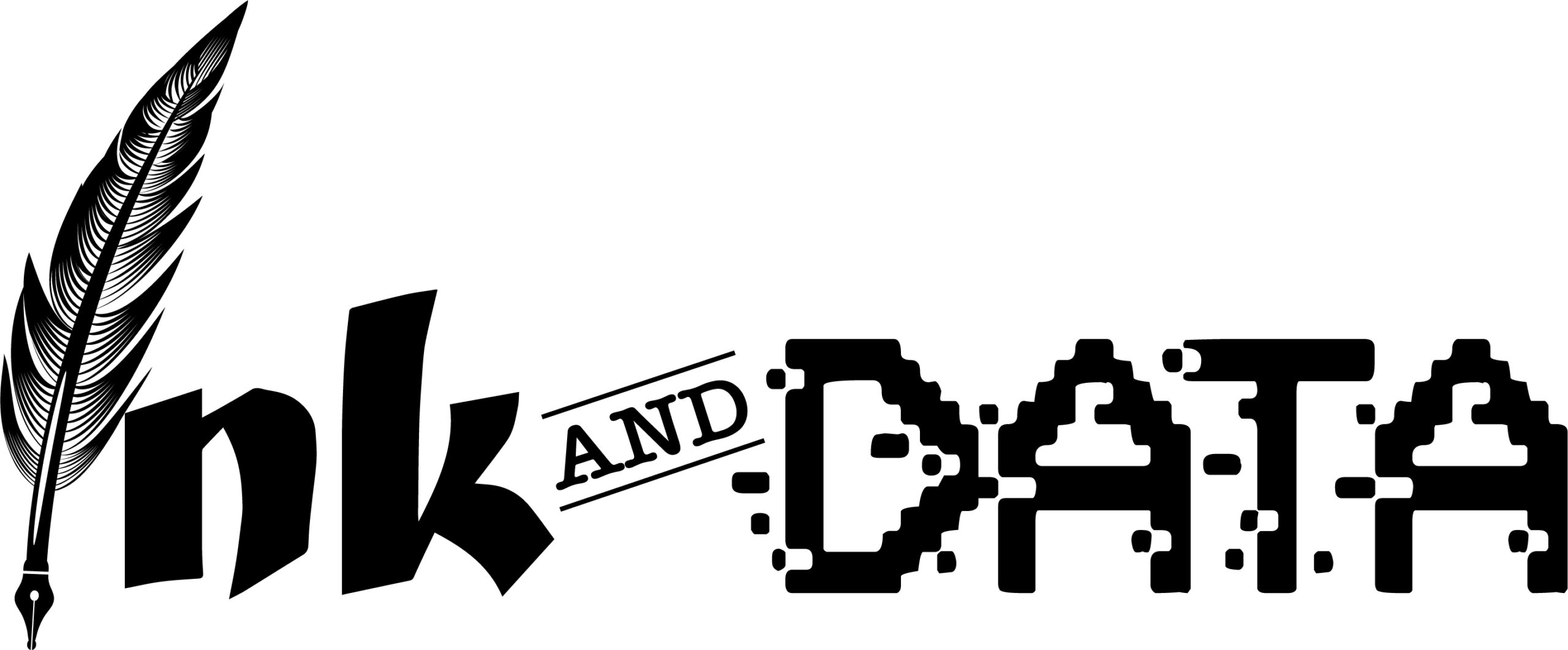

No Comments